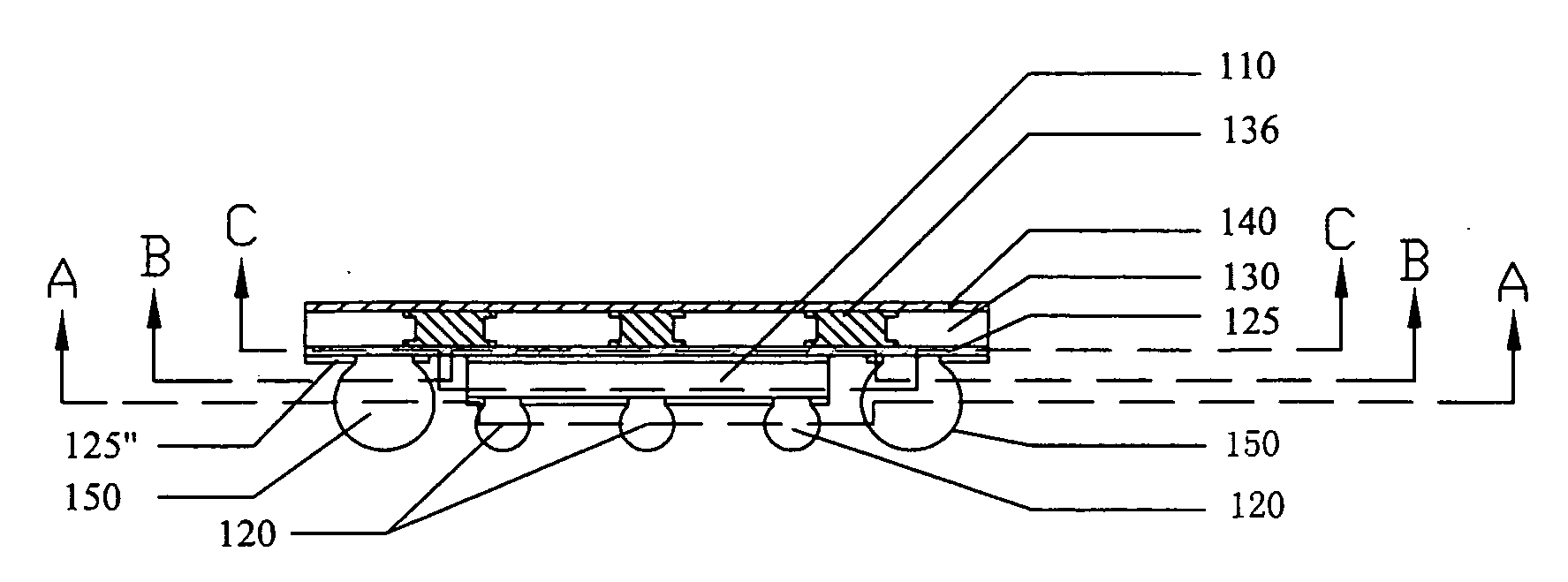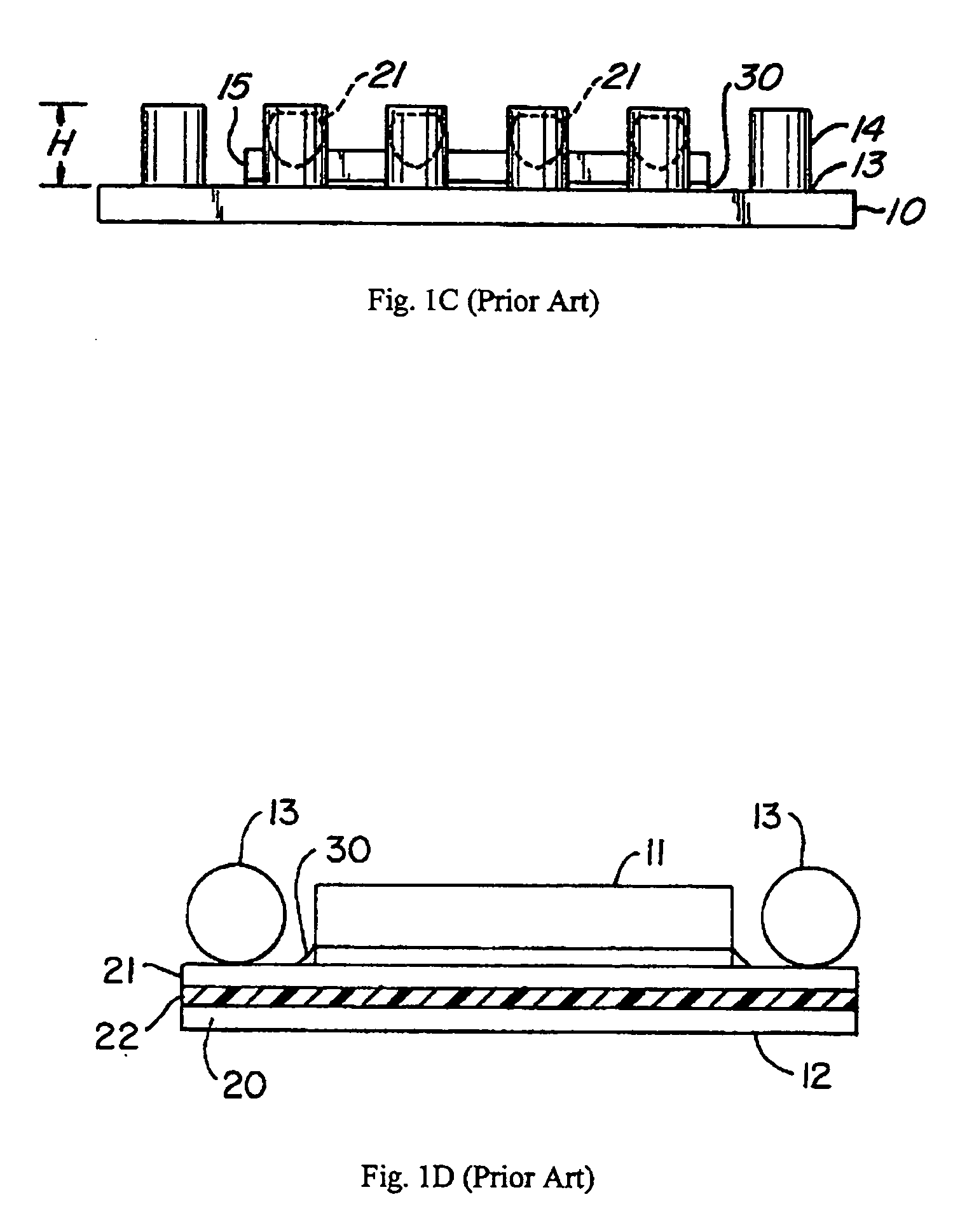Vertically packaged MOSFET and IC power devices as integrated module using 3D interconnected laminates
a technology of interconnected laminates and integrated modules, which is applied in the direction of semiconductor devices, semiconductor/solid-state device details, electrical apparatus, etc., can solve the problems of thermal mismatch between the metal lines of the leadframe and the printed circuit board, the failure rate of solder joints is higher, and the mechanical structure is conventional, so as to achieve convenient stacking
- Summary
- Abstract
- Description
- Claims
- Application Information
AI Technical Summary
Benefits of technology
Problems solved by technology
Method used
Image
Examples
Embodiment Construction
[0026] Referring to FIGS. 2A and 2B for a side cross sectional view and a bottom view of a new MOSFET package 100 of this invention. The MOSFET package 100 includes a MOSFET semiconductor chip 110 that has a plurality of solder bumps 120 and 121. The solder bumps 120 and 121 are in electrical contact to the source pad and gate pad disposed on the top surface of the MOSFET chip 110. A plurality of copper traces 125 is connected to the drain contact disposed on the bottom surface of the MOSFET chip 110. A copper plate 125′ is electroplated to a laminated board, e.g., a printed circuit board (PCB) 130, that has a plurality of via connector filled with copper 135 therein to connect to the top surface. A top copper plate 140 is further electroplated to the top surface of the laminated board, e.g., the PCB 130. A ball grid array (BGA) that includes a plurality of solder balls 150 is disposed on the bottom surface of the PCB 130. The balls 150 of the BGA are in electric contact with the co...
PUM
 Login to View More
Login to View More Abstract
Description
Claims
Application Information
 Login to View More
Login to View More - R&D
- Intellectual Property
- Life Sciences
- Materials
- Tech Scout
- Unparalleled Data Quality
- Higher Quality Content
- 60% Fewer Hallucinations
Browse by: Latest US Patents, China's latest patents, Technical Efficacy Thesaurus, Application Domain, Technology Topic, Popular Technical Reports.
© 2025 PatSnap. All rights reserved.Legal|Privacy policy|Modern Slavery Act Transparency Statement|Sitemap|About US| Contact US: help@patsnap.com



